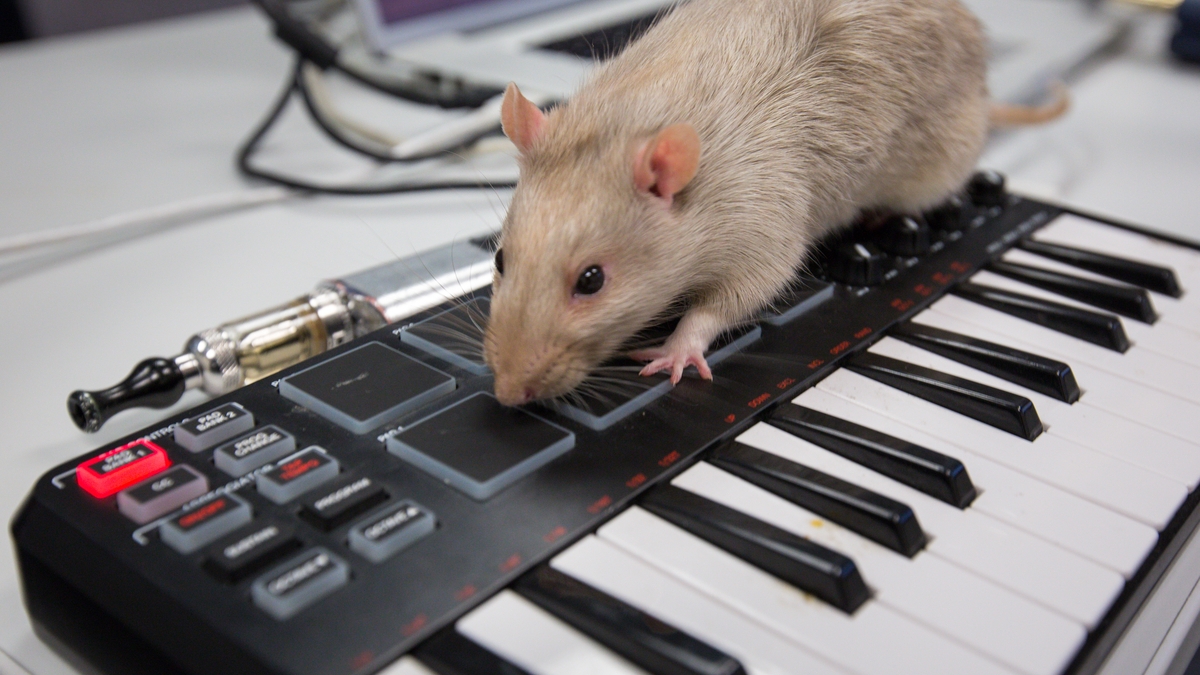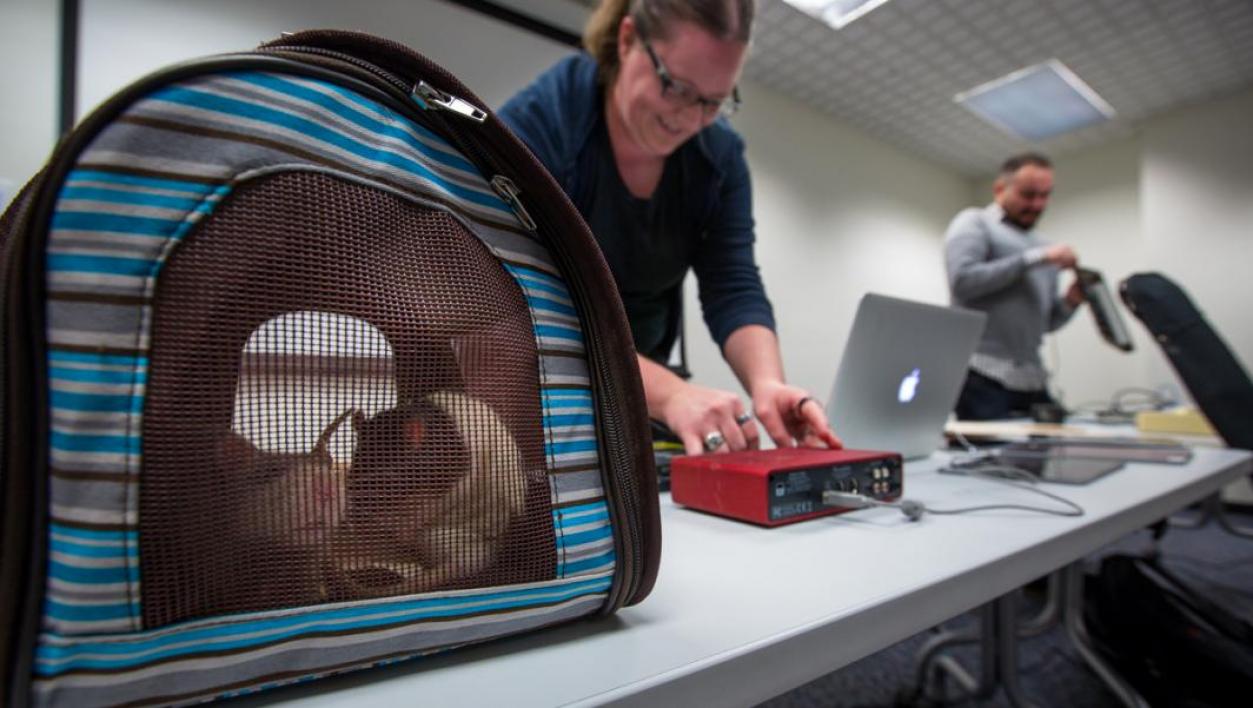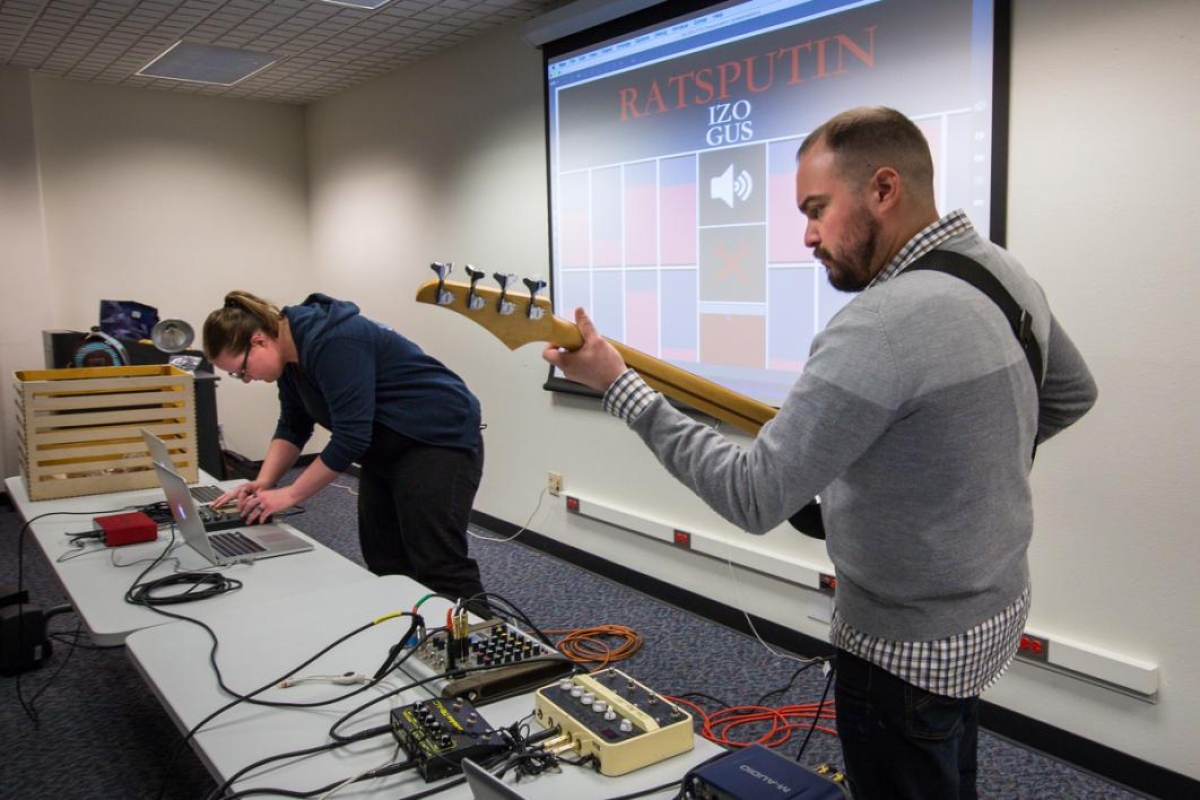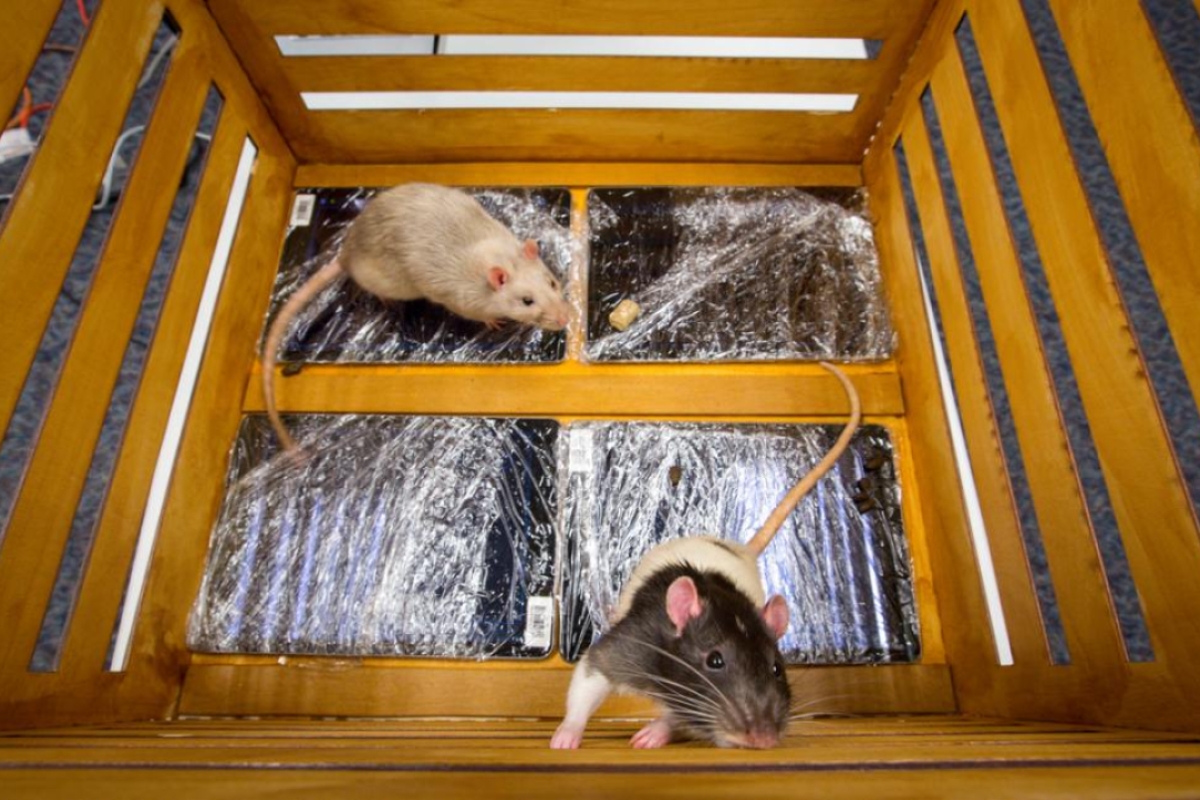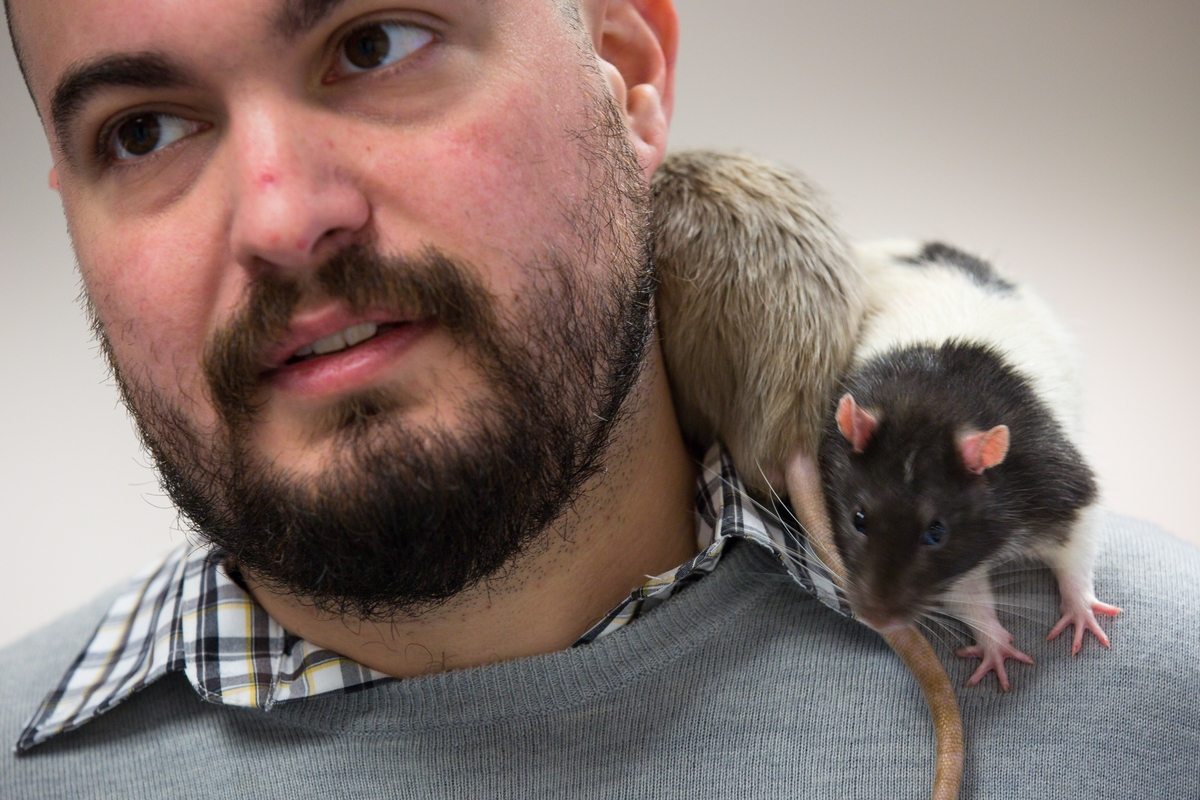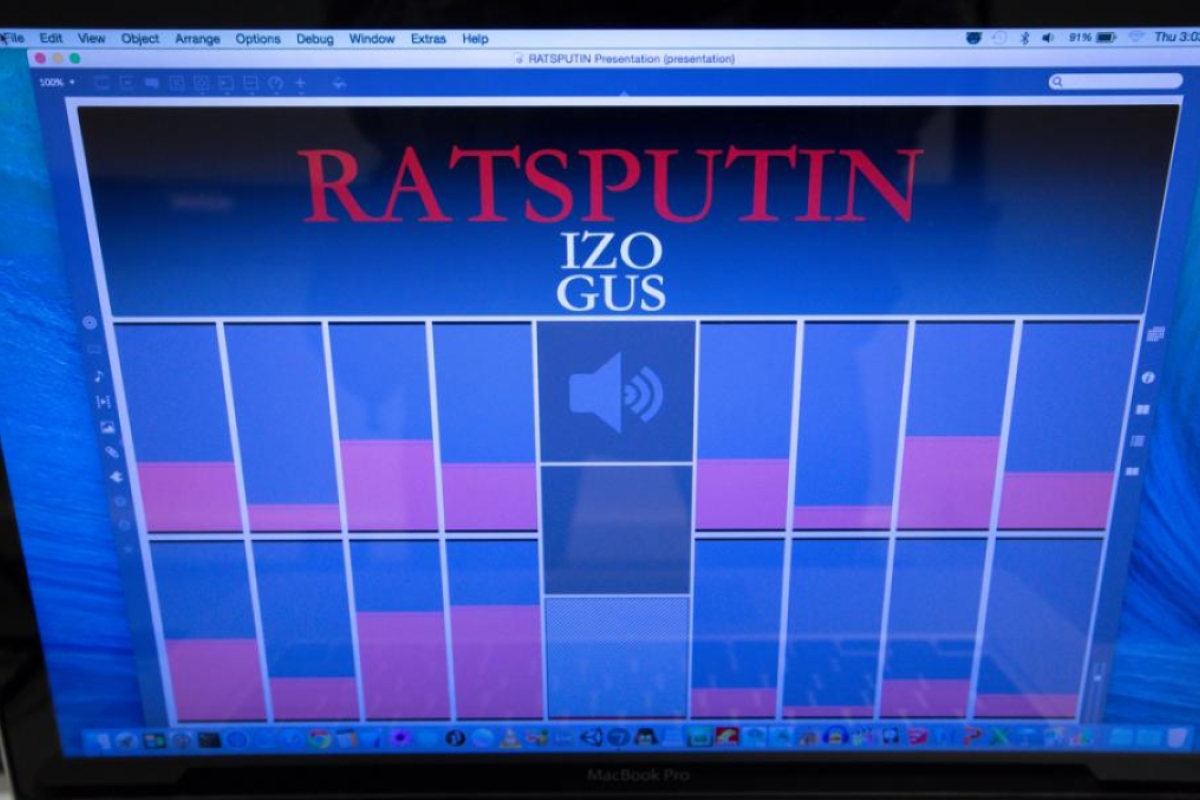The song that filled the room in ASU's Stauffer Hall with psychedelic drones, atmospheric bleeps and ethereal cries wasn’t exactly jazz, or pop.
But, sonically, the composition could have been mistaken for the Beatles’ “Revolution 9” or even a more dissonant take on Bjork’s “Biophilia” album.
It sounded nice, if not interesting.
Which could be surprising considering half of the musical quartet was vermin. And we’re not talking about street punks or rat finks, but actual rodents named Gus and Izo.
The rats, pets of ASU student Andrew Sanchez, were enlisted as part of a musical project called “Ratsputin.” The project was headed up by Sanchez and Jennifer Anderson, digital culture students in Arizona State University’s School of Arts, Media and EngineeringThe School of Arts, Media and Engineering is part of both the Herberger Institute for Design and the Arts and the Ira A. Fulton Schools of Engineering..
It’s understandable if you recoiled a bit at the mention of rats making music. The public’s unfavorable perception of these rodents was the driving force behind the project.
“The general public views rodents unfavorably, and even going as far as labeling these animals as a second-class set of species. We wanted to change the perception of that,” Sanchez said. “Rats are as intelligent as any dog or cat and can be easily trained. If they’re out of the cage and they’re nice enough, they will come to me if I call them.”
And in December, they responded to the call to produce sounds for an experimental piece for their Collaborative Projects and Research class, which Sanchez says he stumbled upon by accident.
“It came to me one night when Gus was out of the cage and crawling around on my iPhone. I noticed his hands and feet affected it, and I thought, ‘If Gus’ paws could have an effect on an iPhone, then it could have an effect on an iPad,’ ” Sanchez said. “I figured this would be a worthwhile opportunity.”
So did Sanchez’s mentor, Garth Paine, a professor of sound and interactive media.
“There’s value in interspecies communication, and animals definitely use sound to communicate,” Paine said. “The intention here is not to do a full empirical study because we’re making music with them. It’s more about the interspecies level of communication and what it means to be autonomous agents into the musical world.”
It wasn’t the first time rats and music have been used in an academic setting. In 1998, Francis Rauscher, a cellist turned psychologist, played a CD of Mozart for rats in an experiment she conducted in a University of Wisconsin lab. She suggested the famous composer’s music stimulated specific neuron connections in the abstract reasoning center of the brain, making rats scamper faster and more accurately through a maze. The experiment and a series of others conducted by Rauscher coined the phrase the “Mozart Effect.”
Sanchez and Anderson sifted through mountains of research on interspecies performances but could not find any evidence where rats actively participated in the creation of the music.
“I’m a classically trained musician, so the prospect of doing something like this just seemed wild and fun,” Anderson said. “We knew the rats couldn’t sing or play an instrument, so we had to come up with an idea that made them not only active participants but actual leaders.”
This was achieved by placing four Apple iPads at the bottom of an enclosed wooden crate. The rats crafted sounds by their movements on the tablet, which was then run through a Kaossilator Pro, a palm-sized synthesizer that features a wide array of sound and loop recordings. Once Gus and Izo began to perform — thanks to a decent supply of kale and cucumbers — Sanchez droned on his bass while Anderson filled in spaces of silence with carefully chosen sounds and effects on her synthesizer, adding textures and timbres that complemented and played off their smaller counterparts.
For Anderson, jamming with Gus and Izo was not much different than performing in a classical concert.
“As a violinist I have to watch the conductor to see what the cues are and where I should be in order to follow,” Anderson said. “The same concept sort of applies here. We can have all the structure we want, but it’s really up to Gus and Izo and how playful they feel. They lead the way whether they know it or not.”
No idea if the Gus and Izo are Rolling Stones fans, but they certainly helped these two students achieve total “Ratisfaction.”
The image of the rat Izo at the top of the page was photographed by Charlie Leight/ASU Now
More Science and technology

Stuck at the airport and we love it #not
Airports don’t bring out the best in people.Ten years ago, Ashwin Rajadesingan was traveling and had that thought. Today, he is an assistant professor at the University of Texas at Austin, but back…

ASU in position to accelerate collaboration between space, semiconductor industries
More than 200 academic, business and government leaders in the space industry converged in Tempe March 19–20 for the third annual Arizona Space Summit, a statewide effort designed to elevate…

A spectacular celestial event: Nova explosion in Northern Crown constellation expected within 18 months
Within the next year to 18 months, stargazers around the world will witness a dazzling celestial event as a “new” star appears in the constellation Corona Borealis, also known as the Northern Crown.…


